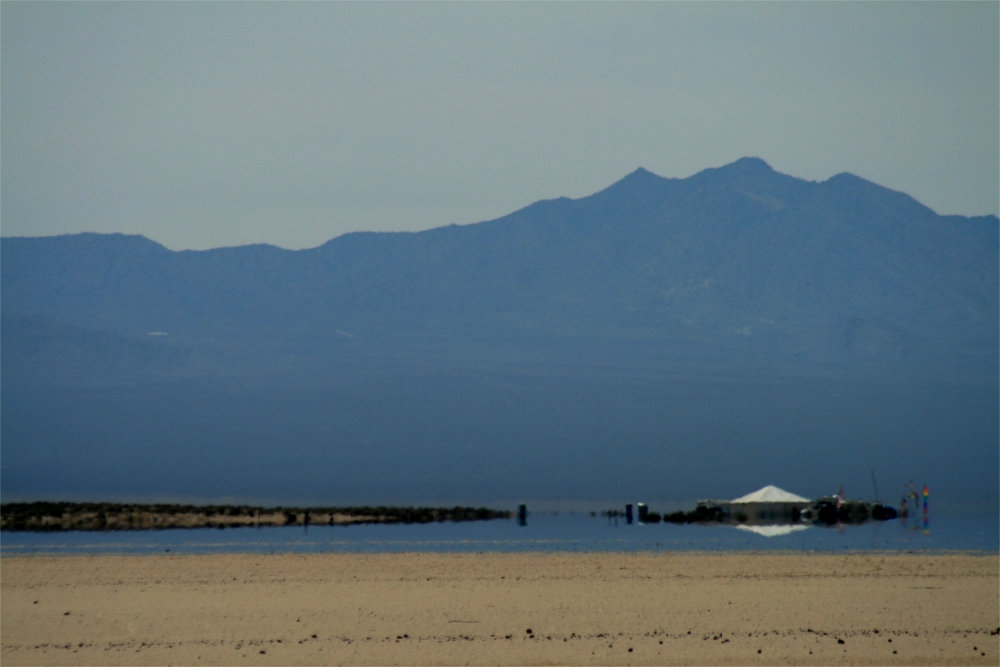
I learned this today. What causes water mirages and heat hazes? Water mirages and heat hazes are caused because light travels at different speeds through warm air and cold air.
Light travels at 299792458 m / s in a vacuum. When the light from the sun hits our atmosphere, the density of the air causes it to change speed. This speed change varies depending on the density of the air that the light encounters. Hot air is less dense than cold air, which is why hot air rises. Light travels faster in hot air than it does in cold air. When the air heats up, the molecules have more energy and they move a lot more, making warm air less dense than cold air. The density is the number of molecules there are in a given space. Cold air has more molecules in a given space than warm air because the molecules move less.
Light is slowed down in air because the electromagnetic wave of light combines with the electromagnetic field of the air molecules. Light doesn’t slow down because it hits the air molecules. Light photons travel as an electromagnetic wave. When this electromagnetic wave enters the air, it makes the electrons in the air particles oscillate. This oscillation produces an electric charge which also has an electromagnetic wave. This wave and the light wave combine, slowing down the light. When the light goes back into a vacuum, this interference disappears and the wave goes back to light speed.
Because hot air has more energy than cold air, the molecules are more spread out, so these electromagnetic waves have less effect on the light wave, which is why light slows down more in cold air than in hot air.
A heat haze is caused when the ground is hot enough to heat the air above it. This usually happens on roads, or sandy ground. Tarmac and concrete surfaces can usually be 10℃ or more hotter than the surrounding air. This heat warms up the air directly above it, but that heat doesn’t travel more than a few meters and it is contained by a layer of cooler air above it. As the air cools when it meets the cooler air above it, it creates heat gradients through the air. The speed of light changes as it encounters each gradient, giving the viewer the impression that the air is shimmering.
So, what causes the water-like mirages on roads and in deserts? The same process. When light is slowed down as it enters the air, it changes direction. This is caused because the side of the light wave that enters the air first slows down before the side of the wave that enters the air last. For the same reason, the light wave returns to its original direction when it leaves the air. This process is called refraction.
When light from the sky comes down at a low angle, it travels through the colder air, but is refracted up off the warmer air, before it can hit the ground. If the light wave hit the ground, it would be absorbed and you wouldn’t see anything, but it is refracted up and into your eyes. The heat haze also makes the refracted light shimmer. The shimmering light enters your eyes. Your brain, through millions of years of evolution, has learned to associate shimmering whitish light with water. So, water is what you see. As you approach the area, the angle changes and it disappears. The angle and distance you need to see a mirage change depending on the temperature of the air above the surface.
The word mirage came into English in the 19th century. It came from the French word “mirer”, which means to look at.
So, what causes water mirages and heat haze? The speed of light changes in cool air and warm air. On a hot day, the air above the Earth’s surface heats up causing a heat gradient. The light wave travels at different speeds through this gradient, giving the shimmering effect. Mirages are caused when the light wave hits the layer of warmer air and is refracted up before it hits the ground. We see the shimmering light and our brain registers it as water.
Sources
http://www.mjtruiz.com/publications/2019_11_mirage.pdf
https://encyclopedia2.thefreedictionary.com/Heat+haze
http://physicsbuzz.physicscentral.com/2015/09/ask-physicist-cold-light-and-negative.html
https://www.quora.com/Why-does-light-travel-faster-in-hotter-regions-than-in-colder-ones
https://www.wsav.com/news/weather-wise-kids-what-causes-a-mirage-on-hot-days/
https://en.wikipedia.org/wiki/Refraction
https://en.wikipedia.org/wiki/Mirage
https://www.theguardian.com/news/2011/aug/17/weatherwatch-heat-haze-mirage
